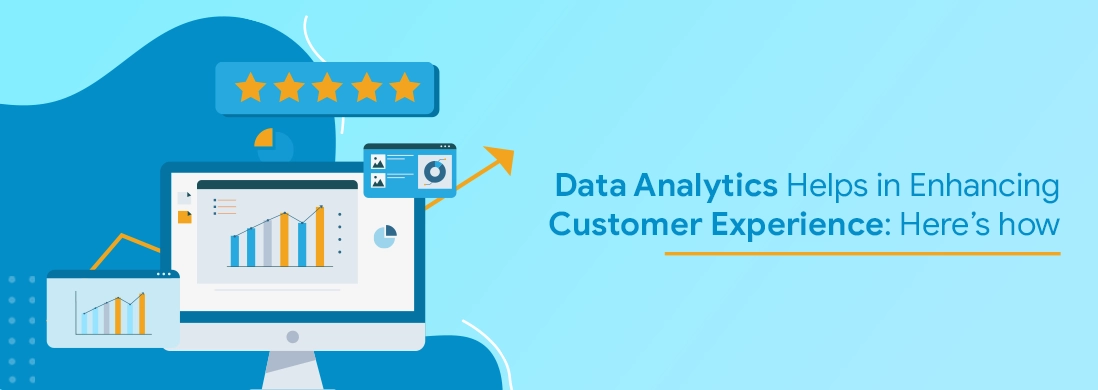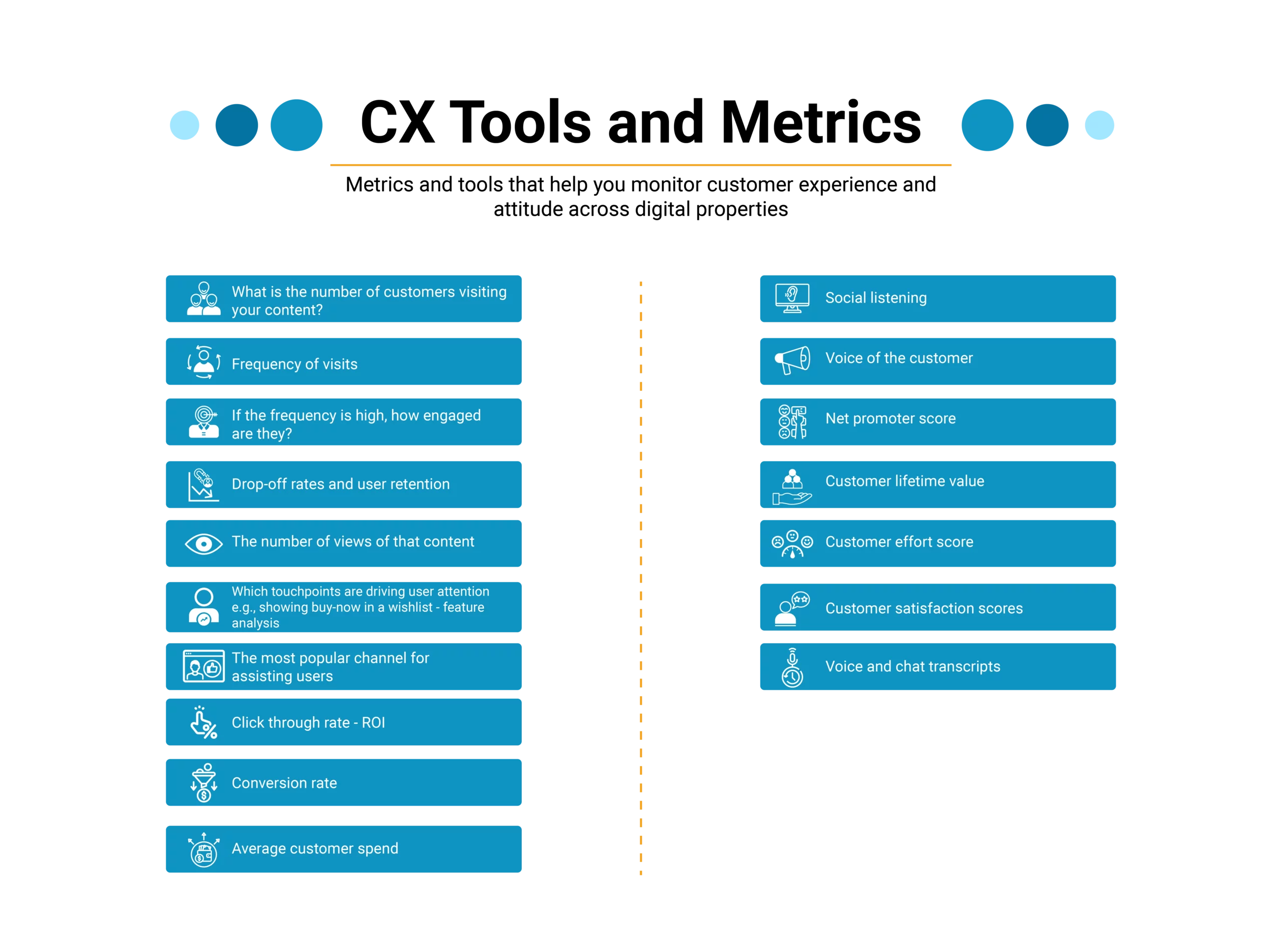In today’s hyper-connected world, data is at the center of almost everything. However, all this data is of little or no use if not analyzed, as it will remain idle without having any positive effect on how a business is operated.
This is where data analytics consulting services comes in!
Data analytics has been transforming the way business providers look at customer experience. While the latest technological disruptions today are focusing more and more on personalization and optimizing the user experience, data mining and analysis offer great potential in further improving the processes for better business outcomes.
An increasing number of businesses are embracing this shift and implementing more data analytics solutions to optimize their business offerings. It also allows companies to understand their customers’ needs better and deliver accordingly.
To this end, this post aims to explore data analytics solutions and the importance of the same in enhancing customer experience (CX) and driving ROI for businesses.
The correlation between data analytics and customer experience
Data analytics refers to the collection and detailed study of data or information to derive meaningful value from it. Businesses use various data analytics solutions and techniques to review, assess, and analyze data to improve their decision-making and customer experience.
Customer experience analytics, on the other hand, is a data-driven process that takes into consideration every interaction between a business and its customers. This kind of analysis helps businesses understand their customers better and improve customer experience and brand loyalty.
How Data Analytics enhances customer experience?
Here are some key ways data and analytics services can help improve customer experience and business ROI.
1. Personalize the User Experience:
Collecting data from multiple users across platforms and demographics allows you to notice several repeating patterns and themes. These themes then help you build a customer persona for.
A recent study by McKinsey estimates that personalizing the customer experience can enhance the company’s revenue by a good 5-10%.
Crafting a user persona or profile plays a key role here as it helps marketers and customer support agents adjust their offerings to suit customers’ expectations with a specific user profile in mind.
A customer profile describes your current customers based on their demographics, locations, purchasing habits, or likelihood of using certain products. Leveraging data analytics consulting services ensures that businesses can accurately interpret these customer insights.
2. Identify Trends:
Decision-makers in any business are continuously looking for ways to assess key performance indicators (KPIs) across business functions. Data and analytics services makes it simpler to identify customer behavior and future market trends.
A powerful data analytics solution includes detailed dashboards and visualization techniques that allow you to conveniently explore areas that require greater analysis.
Besides, it helps in identifying trends as it shows businesses how to leverage massive chunks of information or data to understand how the company is operating and how various areas are performing.
This, in turn, makes it easier for businesses to strategize, make plans, reassign resources, and identify better opportunities to generate higher ROI.
3. Segment high-intent audience:
Having built a user persona along with identifying the main pain points allows marketers to accurately predict consumer behavior with near precision and group them in the high-intent audience segment for better personalization.
Big names such as Apple and Amazon fully leverage this kind of customer experience data, a key reason users trust these companies more in helping them solve specific problems or pain points.
4. Offer Deeper Analysis:
Data analytics solutions also allow you to dig deeper into your customer service data and analyze the feedback. They help you understand the various aspects of your customer service platform that are working and isolate the factors that are leading to undesirable outcomes.
Further, they data analytics allows you to better measure overall industry sentiment and product-based trends to clearly identify areas where customer feedback levels could be improved.
This kind of deeper data analytics, where you can see how a service request is addressed throughout its lifecycle, also allows you to better gauge the specific customer service areas that require closer attention.
Offer more convenient and responsive customer support:
Another advantage of using data analytics consulting services and data-driven systems is that they can work with almost all existing channels, including SMS, chat, voice, WhatsApp, Slack, etc., without necessarily requiring human intervention.
This helps businesses provide customers with a more convenient and responsive support system across their preferred platforms.
Further, customer interactions also become much faster because the latest technology helps correctly interpret what customers are saying and respond appropriately without wasting any time.
Best Practices to enhance customer experience with data analytics
Businesses rely on data and analytics services to understand customer behavior, anticipate needs, and deliver personalized experiences.
Below are some best practices to maximize the impact of data analytics on customer experience:
– Being precise on the end goal:
It is essential to define the end goal for companies to track the right customer experience metrics. For instance, to reach digital maturity, the ultimate objective may be to enhance user engagement on digital platforms and monitor user interaction and all touchpoints, to set up a reliable measurement system. On the other hand, when it comes to the gaming industry, the end goal could be in-app purchases, retention, clicks on ads, and conversions.
– Choosing the right data analytics tool to make a data-driven decision:
Making data-backed decisions can be a challenge without the right data analytics tools. Data collection is key to uncovering customer insights, and there are a variety of methods to do this. From session tracking and event tracking to session replay and heatmaps, you can gain valuable information about user behavior. Utilizing quantitative solutions like Google Analytics in combination with an A/B testing tool, you can form an effective user engagement analytics strategy.
– Optimizing the Page Load Time:
Your website page load time is critical to improving customer experience. Websites that load slowly have a direct correlation with poor search engine rankings.
Some of the ways you can use to optimize page load time include:
-Reduce the size of images
-Use speed-optimized widgets
-Remove unnecessary files
Leveraging Data and Analytics Services for Improved Customer Experience
An increasing number of businesses today have become customer-centric for a valid reason.
Whether it’s assessing and catering to specific customer needs or driving personalization, data analytics plays a key role in helping brands enhance customer experience by connecting with users on an emotional level.
It is, therefore, safe to say that customer service and data analytics today go hand-in-hand. Without reliable and accurate customer-centric data, businesses cannot think of making successful and impactful decisions that drive growth and RoI, as well as boost user satisfaction.



